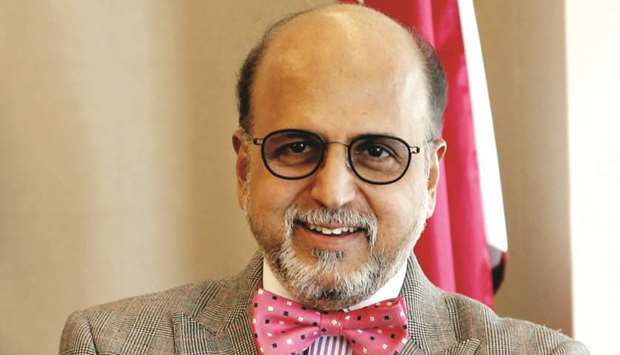*Doha Bank selectively focusing on lending across various sectors to build quality loan book, says CEO
Doha Bank is now focused on redefining its asset allocation model, derisking the bank, and improving asset quality ratios including provision coverage, CEO Dr R Seetharaman has said.
“We have done a prudential approach, wherein 95% of my books have already been provided. And nearly 70% of the books for Kuwait has been provided in terms of loan-loss provisions. Nearly 95% of Doha Bank’s outstanding books is in Qatar. That’s part of our derisking exercise and is manageable,” Seetharaman said in an interview with Gulf Times in Doha.
“If Qatar is doing well, we will do well. Our cross-border risks are being minimised. In India, we are operating with the capital that has been designated. And we have had no bad experience in India,” the Doha Bank CEO pointed out.
Evaluating Doha Bank’s first-quarter performance, Seetharaman said, “It was a very balanced result, I would say. We have seen growth in assets in the first quarter of this year, 3% year-on-year. This is despite the loan and deposit growth declining 2% and 9% respectively.
“The market conditions were very tough, hence we were very cautious in our approach for loan booking and consolidating our position since last year. Despite decline in deposit, our loan-to-deposit ratio (LDR) still stays strong at 108% as opposed to the market average of 114%.”
Compared to last year, Seetharaman noted, Doha Bank has “consciously driven” its investment books by 32%. This was a “structured” approach to increase the bank’s assets while taking no, or minimal risk and maintaining balance sheet growth.
In respect of profit and loans, he said Doha Bank had seen an increase in interest income by 4%, even as interest expense rose 25%.
“Although our net interest income declined by 12%, yet our net interest margin holding (at 2.09%) is still very high in the market. That said, NIM has declined from 2.24% at the end of the year,” Seetharaman noted.
On the drop in Q1 net profit, he said, “Our net profit was down by 19% primarily due to increase in loan loss provision, which rose from QR50mn last year to QR120mn this year.
“Our return on average equity was 11.4% and return an average asset 1.28%. Our total capital adequacy ratio was very strong at 17.1% as compared to 16.6% in the same period last year.”
On the contributors to Doha Bank’s total assets expanding 3% year-on-year (to QR96.3bn) at the end of March this year, Seetharaman said, “Despite the drop in loan book year-on-year, the investment book has surged year-on-year, which is one of the key contributors to growth in asset book. It was a conscious decision to have a check on quality loan. And we have shifted our assets growth strategy from loan to investment.
“Our investment has grown 32% in last 12 months,” he pointed out.
On increasing the provision coverage for non-performing loans, he said, “The increase in provisions is part of our short and long term plans. We are taking a conscious decision to increase the provision and the coverage to meet our overall plan. Our reserve for impaired loans to total loans stood at 137% in the first quarter including the expected credit loss for loans.”
He said Doha Bank’s non-performing loans (NPL) ratio stood at 5.78% (as of Q1, 2019), which has “fractionally declined” compared to year end 2018 at 5.85%.
“Although it is higher than the Qatari banking average, as part of enterprise risk management initiative, we are exerting all our efforts to gradually bring it down,” the Doha Bank CEO said.
“Given the market conditions, we are not too contended with the credit growth; we are selectively focusing on lending across various sectors to build quality loan book,” Seetharaman said in reply to a question as to whether Doha Bank was satisfied with its current deposits and credit growth.
On the key themes the bank has identified for further growth this year, he said, “The key themes, which we will focus in 2019, are cost control, digital transformation, consolidation in the local market and selective expansion in global markets this year. We are looking for low-risk growth and are keen to tap government sectors and continue to build up investment book.”
On branch network restructuring, he said, “As part of our strategy and transformation plan, we will keep consolidating our retail branch network as we all know that the concentration of number of branches in Qatar is very high by international standards. However, we will be opening retail branches in strategic locations, but the overall number of branches will decline in 2019 and in the coming years.”


